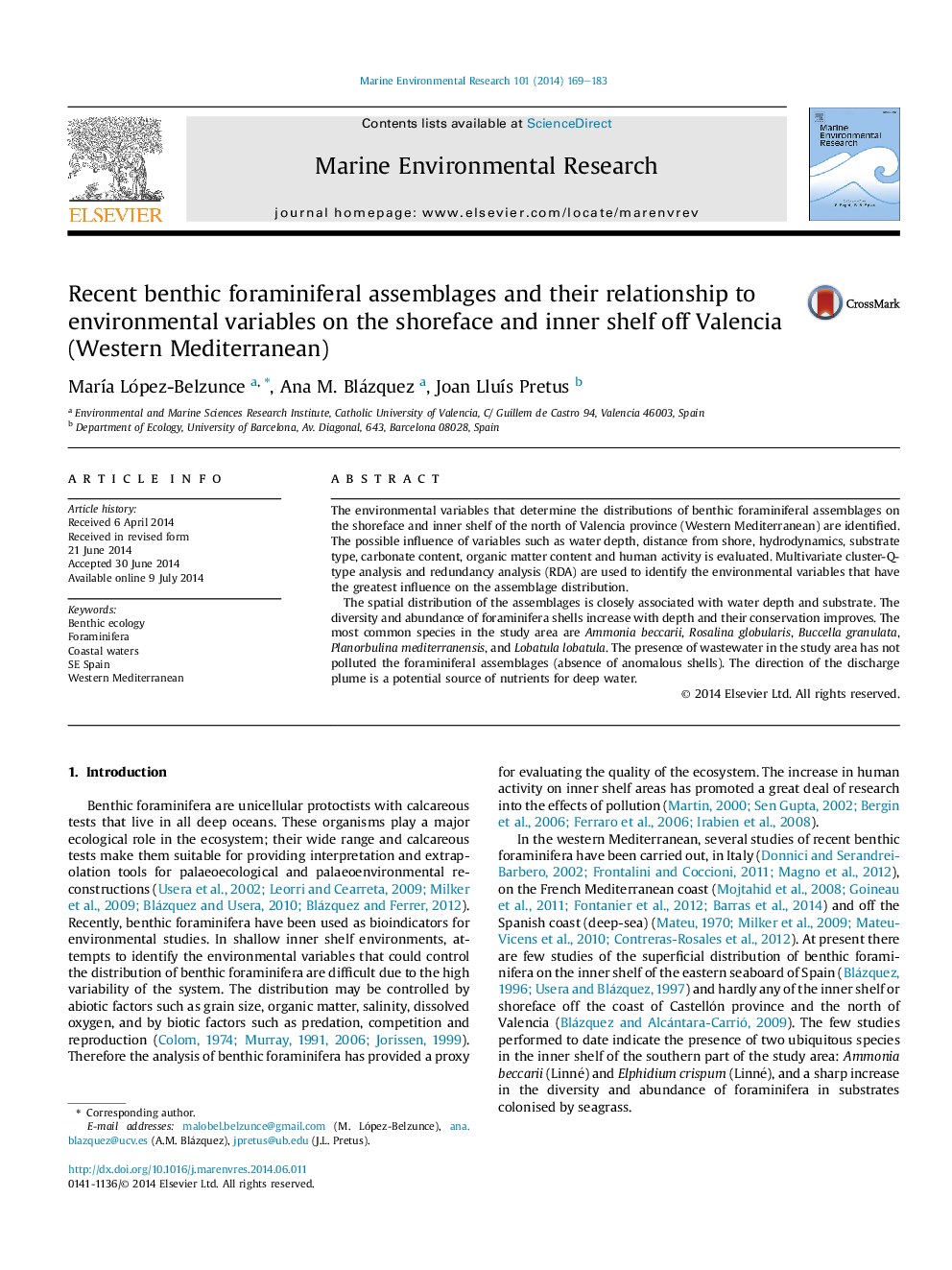| Article ID | Journal | Published Year | Pages | File Type |
|---|---|---|---|---|
| 4550755 | Marine Environmental Research | 2014 | 15 Pages |
•The factors related to depth are the most significant in determining foraminiferal distribution.•The outfall plume does not produce negative impact in the benthic communities.•The abundance of agglutinated taxa is improved regarding to the presence of seagrass and seaweed.
The environmental variables that determine the distributions of benthic foraminiferal assemblages on the shoreface and inner shelf of the north of Valencia province (Western Mediterranean) are identified. The possible influence of variables such as water depth, distance from shore, hydrodynamics, substrate type, carbonate content, organic matter content and human activity is evaluated. Multivariate cluster-Q-type analysis and redundancy analysis (RDA) are used to identify the environmental variables that have the greatest influence on the assemblage distribution.The spatial distribution of the assemblages is closely associated with water depth and substrate. The diversity and abundance of foraminifera shells increase with depth and their conservation improves. The most common species in the study area are Ammonia beccarii, Rosalina globularis, Buccella granulata, Planorbulina mediterranensis, and Lobatula lobatula. The presence of wastewater in the study area has not polluted the foraminiferal assemblages (absence of anomalous shells). The direction of the discharge plume is a potential source of nutrients for deep water.
